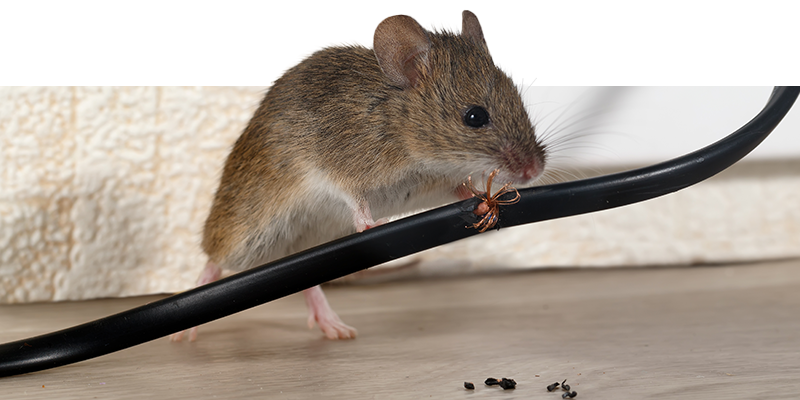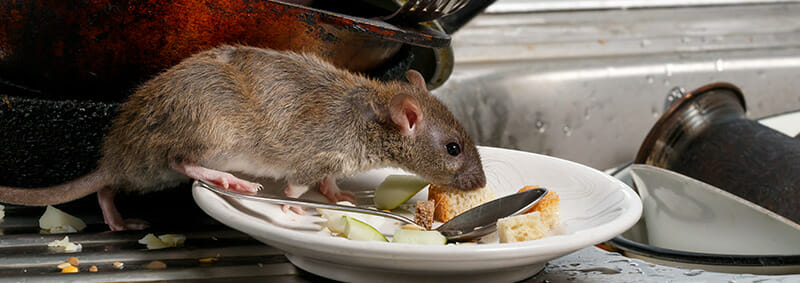Of all the pest problems that may arise, mouse and rat infestations are among the most common. Rodents are known for taking residence in homes and businesses in search of food and shelter. Unfortunately, it’s not always easy to identify the presence of mice and rats until an infestation is well underway. These rodents are incredibly intelligent, making them superb hiders. However, if you are diligent and know what to look for, you may be able to quickly identify signs of mice and rats before you have a severe case to treat.
Commercial and Residential Pest Control Services | Dodson Bros. Exterminating Co., Inc.
Signs of a Mouse Infestation
If you live in a rural area, chances are, if you start to suspect a rodent problem, you’re likely dealing with mice. Mice are sneaky critters that can fit through tiny spaces to get to new homes and food sources. However, they will often leave evidence of their activities, which you can look out for if you know the telltale signs.
Indicators of mouse activity may include:
- Gnaw marks on food containers, boxes, electrical wiring, and other household items.
- Droppings about ⅛-¼ inch long, shaped like grains of rice. These droppings are moist when fresh, indicating an active infestation. A musky odor may alert you to mouse urine and feces even if they aren’t visible.
- Hearing scratching sounds or scuffling noises. As mice move around, they may make faint, but distinct noises.
- Unusual anxious behavior from dogs or cats in your home. Your pets may detect the presence of mice before you thanks to their heightened senses of smell and hearing, so if you start to see your furry friends reacting strangely, you may want to investigate.
- Finding a rodent nest is a sure sign of an infestation, present or former. Common nesting materials include cardboard, packing materials, plastic, fabric, and whatever other soft materials the rodents could find.

Where Mice Often Hide
One of the reasons homeowners don’t often notice a mouse problem is due to their sneaky nature. They tend to stay out of the way in dark, hard-to-reach places. Mice are nocturnal, so if you see them during the day, their numbers have likely grown substantially, but in most cases, you won’t spot them out in the open.
Because they can fit through even the smallest entry points, rodents can sneak into air conditioning vents, pipes, walls, attics, basements, garages, pantries, and sheds with relative ease. If you don’t know where exactly a rodent could be hiding, you can start by placing traps in strategic locations. Some of these locations may include:

- Along an already existing rodent runway
- Near a vent opening
- In a pantry
- Around an attic or basement
- Inside or around stoves and ovens
Curious About the Differences Between
Mice and Rats?
Do Mouse Traps Work?
If prevention hasn’t worked, many kinds of traps can be used to get rid of rodents. Snap traps commonly kill or seriously injure rodents, but other traps exist that will trap them so you can humanely remove them from your home, like traps with doors that snap shut when the bait is triggered and traps with sticky substances on them that rodents can’t escape. It’s a good idea to bait such traps with foods like cheese, peanut butter, tiny pieces of fruit or meat and pet food.
Signs of a Rat Infestation
Rats are more prevalent in urban environments, like cities and even multi-family living complexes. When attempting to distinguish the differences between the signs of mice and the signs of rats, one of the first things to consider is size. Key indicators of a rat infestation are quite similar to ones you’ll encounter with mice – but rats are generally larger than mice, and the evidence of their presence reflects that.
- Rats will still leave behind chew patterns and tooth marks, but their gnawing can be even more destructive and obvious.
- Rat droppings are larger than mouse droppings and are shaped slightly differently. Rat droppings are rod-shaped and do not taper at the ends like mouse feces.
- Much like mice, rats can also be identified by unexplained squeaking or scurrying noises, especially if you notice them at night.
- Dark grease marks on the bottoms of walls, or even up and down walls, where rats regularly travel. This is far less common with mice infestations, so if you notice this, you are likely experiencing rat activity.

Mouse Infestations and Rat Infestations Are Dangerous
The signs of a rodent infestation are unsettling and for good reason. Rodents can pose significant health risks by contaminating food sources and spreading airborne viruses, including hantavirus. In addition, when rodents chew through electrical wiring, they can create fire hazards.
When to Contact a Rodent Control Professional
DIY pest control techniques may be effective if you only have one or a few rodents to deal with. However, if you start to see, hear, or smell more and more evidence of a rodent infestation in your home, setting out traps may not be enough. Two or three litters of rodents cause an infestation quickly, and traps will not catch them all. In addition, because rodents can contaminate areas, it’s important you sanitize the area thoroughly.
At Dodson Pest Control, we are here to help treat your rodent problem and provide guidance for clean-up and preventative measures. Our inspections are always free, so contact us if you think you have a rodent infestation!
